Phasing out conventional lighting 2023: now a reality?
- Posted on
- By INTOLED
- 0

For years, the European Union has been trying to combat the production and sale of conventional lighting. The EU is strongly committed to sustainability, therefor conventional, energy-guzzling lighting, which often contains toxic substances, is no longer acceptable as lighting in Europe. The production of incandescent bulbs and also many halogen bulbs has been banned for some time now, but soon there will be a fluorescent light ban. Can you no longer see the light through the bulbs? We will explain things clearly and step by step.
- EU ban on conventional lighting
- Compare LED bulbs, incandescent bulbs, halogen bulbs and energy-saving bulbs
- What is the RoHS directive?
- Table - Phasing out conventional lighting: when is which conventional bulb banned?
- What are the benefits of a LED light bulb?
- What are the disadvantages of an incandescent bulb?
- What are the advantages of an energy-saving light bulb?
What is conventional lighting?
Conventional lighting and its meaning. Another word for conventional is traditional. We are talking about the traditional way lighting works. And as is actually the case with all inventions, the way lighting works is becoming more effective, cheaper and more innovative. What we used to think was top-of-the-notch before, has now become outdated and can be done much, much better.
So what is that conventional way of lighting? How did it work? Simply put: it involved heating up wires, releasing light. As you can imagine, this also involves a lot of energy leakage, because a lot of heat is being produced. We will discuss 3 types of conventional lighting in this article: the incandescent lamp, halogen lamp and energy-saving lamp.
The evolution of the light bulb
Let's start at the beginning. The word lamp derives from the French lampe and the Latin lampas, meaning torch or flame. The first form of a lamp is an oil lamp from prehistoric times, where animal fat was burned to make light. Next came the oil lamp which was used with olive oil, then the petroleum lamp and pretty soon after that the gas lamp. With a gas lamp, gas rather than oil is used to burn for light. At the beginning of the twentieth century the carbide lamp appeared and a little later the petromax lamp came into life.
The first electric lighting came in the form of an arc lamp and soon after, the incandescent lamp appeared. Fun fact: the light bulb was not, as many people think, invented by Thomas Edison, but by the Englishman Joseph Swan. However, Thomas Edison made sure that the bulb could be used in the home, and thanks to him, usage of the bulb also became scalable. The company Philips was first to produce light bulbs.

We compare LED bulbs, incandescent bulbs, halogen bulbs and energy-saving bulbs
We've already given you a lot of information about the different types of light bulbs. Now it's time to make this concrete and list it. This will give us a good overview of the advantages and disadvantages of the different types of lamps. We show the phased-out conventional lights: incandescent, halogen and energy-saving bulbs. And, of course, the shoo-in winner: LED bulbs.

You can see that LED lighting scores particularly well on durability and lifespan. Another striking point is heat generation. We just talked briefly about how conventional LED lighting works. That light is created by heating wires. That this generates a lot of heat is understandable. Not only is it very inconvenient when changing a bulb, for example (do you remember, back in the day, burning your fingers if you did this right after turning off the lamp?), but it is also a lot less safe.
Furthermore, LED bulbs can actually do everything and more than traditional lighting can, but you have a choice in this. You can dim LED bulbs, recycle, choose a specific beam angle. But you also have the choice of a high CRI value and a huge range of light colors. From atmospheric candlelight to daylight white light, or even all 16.5 colors from the rainbow, when choosing smart lighting.
EU ban on conventional lighting
By now it is clear that a cleaner and better climate has moved up the EU agenda in recent years. Part of this is the ecodesign directive. This directive aims to have significantly reduced greenhouse gas emissions by 2030, compared to 1990. Also part of this directive are the new energy labels. Technology moves fast and what was innovative and sustainable 10 years ago may already be outdated in 2023. Energy saving can fortunately be done faster and faster, much better. So are you curious what light bulbs will be banned in 2023? Read on..
What is the RoHS directive?
The RoHS Directive, Restriction of Hazardous Substances, also known as Directive 2011/65/EU, stipulates that the use of hazardous substances in electronic equipment must be restricted. Its purpose is to protect general public health and the environment. Among other things, the directive affects lighting equipment, thus including lamps. Read more about the RoHS directive, lighting that falls under it and rules that must be met on the Dutch website of the RVO: CE marking: hazardous substances in electr(on)ische equipment (rvo.nl). We will also tell you a bit more about it.
Which substances are involved? And what does the introduction of RoHS mean for lighting?
Among other things, it concerns the use of heavy metals such as lead, mercury, cadmium and hexavalent chromium. For lighting, this means that these substances may no longer be incorporated into lamps. Now you may also understand how important it is not to simply throw old light bulbs in the garbage, but to hand them in at special lamp recycling points.
The hazardous substances must be disposed of properly or they will end up in the environment. The RoHS directive affects fluorescent tubes (linear fluorescent lamps (LFL), energy-saving lamps (compact fluorescent lamps (CFL)) and halogen plug-in lamps. These types of fluorescent lamps may no longer be produced on the European market as of February 2023. So fluorescent light bulbs are banned and we speak of a fluorescent lighting ban.
For RoHS, but actually for all directives and bans on lamps, the following applies: production in the EU is prohibited. In more detail, this means that you can only get products that have already left the factory before the ban, or the product must have been imported from outside the EU. Thus stocks, after all they were produced before the ban, may still be sold, and products may also still be imported from outside the EU. The ban was communicated well in advance, so this includes producers who have seen their chance to still have a lot of production.
This causes a considerable delay in the market, as it will take some time for those companies to sell all of their production. There will be still a lot of fluorescent lighting for sale. Eventually, all phased-out bulbs will disappear, but we are currently talking about a transitional phase. There is no need to worry when conventional lights are gone forever, because for every traditional lighting there’s a fine replacement. A fluorescent light tube led replacement, for example, you can find here.
The phasing out for the purpose of the RoHS directive is in two phases: the first phase starts on Feb. 24, 2023, and the second phase on Aug. 24, 2023. Specifically, from Feb. 24, 2023, energy-saving light bulbs up to 150 watts will be banned, as well as those with a round or square shape smaller or equal to 17 millimeters. As of Feb. 24, fluorescent tubes with a lifetime of at least 25,000 hours are prohibited.
Fluorescent tubes with a diameter smaller than 9 millimeters and larger than 28 millimeters are also banned from then on. These are types T2 and T12. But in case you might wonder: why are t12 bulbs going away? Don’t be sad: when the t 12 bulbs are phased out, there are lots of ways to replace them with sustainable LED lighting.
And are T5 and T8 banned? Yes, from August 24, 2023, fluorescent tubes with a diameter between 9 and 28 millimeters are also prohibited, such as types T5 and T8. If you wonder: Can I replace T5 fluorescent with LED? Yes, you can! Find all of the options for T5 here and the options for T8 here.
Which light bulbs will be banned?
Much earlier, in 2012, incandescent lamps were banned from production. In September 2016, this was the case for 230-volt halogen spotlights, and in 2018 it was the turn of 230-volt clear halogen lamps.
Furthermore, energy-saving bulbs that have an internal ballast were not allowed to be produced as of Sept. 1, 2012. A ballast is a convenience device for a bulb to avoid receiving too much current. In practice, these are energy-saving bulbs with E14 and E27 fittings. While they may no longer be produced, they may still be sold and traded. Also, energy-saving bulbs with an external ballast are not yet included in the production ban.
In addition, from September 1, 2021, R7S halogen lamps over 2700 lumens may no longer be produced. This also applies to halogen lamps with a low voltage, reflector and with a beam angle of more than 10 degrees. These are GU4, GU5.3 and G53 halogen lamps. The production of tube lights T12 and T2 is prohibited from September 1, 2012.
From September 1, 2023, fluorescent tubes T8 of 60, 120 and 150 cm may also no longer be produced. The production of G4, GY6.35 and G9 halogen lamps is prohibited from then on too. However, there are also exceptions: emergency lighting, battery-powered lighting and luminaires where the light source is replaceable and works of art may still use these bulbs.
All these dates and different lamps that may no longer be produced, we can imagine that you have lost the overview a bit. That is why we have put all the phased-out lights in the table below.
What is also good to know is that this list of phasing out conventional light sources is based on three pillars: the technology, the capacity (energy consumption) and the energy class (energy label).
Table - Phasing out conventional lighting: when is which conventional bulb banned?

With this, we hope to have brought some clarity to the world of (traditional) lighting. Would you like to know more or more specifically which bulbs were or will be banned from production when? Then look at the Dutch website Explanation of Ecodesign Regulations Lighting - Waste Circular.
Is LED lighting really that much better than conventional lighting?
The short answer is YES. And that's really not just because we sell LED lighting at INTOLED. We sell LED lighting precisely because we believe in it.
By now we know how incandescent, halogen and energy-saving bulbs work. Now it's time to explain how LED lighting works: LED stands for Light Emitting Diode. A diode is an electrical component through which electricity can flow. When current is passed through it in the right direction, it creates light.
What are the benefits of a LED light bulb?
- LED lighting is extremely efficient. No energy is wasted on heat or anything else, so all the energy is used to produce light. As a result, you need much less energy for brighter lighting. So super sustainable!
- Because all the energy in a LED bulb is put to good use, a LED bulb uses very little energy. A LED lamp uses about 5 to 7 watts and is therefore very energy efficient.
- We have already mentioned this: LED lighting lasts at least 15,000 hours. Compared to incandescent bulbs, a LED lamp lasts at least 15 times longer. And we're only talking about the minimum lifespan of LED bulbs. Many bulbs last up to 50,000 hours and LED fluorescent lights even 100,000 hours. So you don't have to change the bulbs as often and that saves you money, but also saves our nature.
- The possibilities are endless. There are so many variations of LED lights on the market, that you might get overwhelmed. A few important variables:
- The fitting: of course, the bulb must fit the fixture. Examples of European lighting fixtures are E14 or E27, or GU10, but also tube light fittings T5 or T8.
- Color temperature: this is the color of the light. Do you want a warm white light, so 2700K or more daylight white, so 6000K?
- Lumens: how bright do you want a bulb to shine? Do you want to be able to dim a lamp?
- Solidity: this is being measured in a few different factors: do you want a water- and dust-proof lamp? Then you look at the IP rating. Do you want a lamp that doesn't glare? Then UGR is important. Do you want a vandal-resistant lamp? Then look for lamps with a high IK value.
- The beam angle of a LED lamp is variable. So you can choose whether you want a spotlight to shine very specifically on something, or whether you want a lamp to illuminate the entire room and in all directions.
- LED bulbs don't buzz or flicker, but are nice steady and silent.
- LED bulbs are recyclable: an extra win for the environment.
What are the disadvantages of a LED bulb?
There are really no real disadvantages, but of course, if we are very critical, there is always something. For example, the original purchase value of LED bulbs is slightly higher than traditional lighting. Of course, this does not outweigh all the advantages, but we must remain honest. However, the more traditional lighting is being banned, the more LED bulbs are produced and this helps drive the price down. LED bulbs are nowhere near as expensive as they used to be.

Incandescent bulbs
An incandescent lamp is also called a carbon filament lamp. In an incandescent lamp, a filament is heated in a glass bulb that contains very little oxygen. By heating the filament, it starts to emit light. An incandescent bulb is very cheap, but might in the end turn out to be expensive, because you will have to replace an incandescent bulb quickly and it also guzzles energy. The reason for the short life of a light bulb is that the light is created by heat. That is because the filament has to get very hot to give light and that happens at a very high temperature. The filament evaporates at some point and then runs out: it burns through. This is when a light bulb really needs replacement.
What are the advantages of an incandescent bulb?
- An incandescent lamp usually has a high CRI value. This means that colors are reproduced very naturally in this light. Try to compare this to poor light in a clothing or furniture store. Then you often walk towards the window to see the ‘real’ colors. With an incandescent lamp, you won't have that idea.
- An incandescent bulb is always dimmable, because of the simple technology in the bulb.
From the incandescent lamp, we also know the popular filament lamps, where you can see the filament through the bulb. Nowadays there is great demand for lamps in which you can see the filament. Fortunately, this type of bulb is now also available in the more durable version of a LED bulb.
What are the disadvantages of an incandescent bulb?
- Because an incandescent lamp produces light by heating filaments, it releases a lot of heat and thus energy. This energy is not used effectively and is therefore lost. This is a waste. This gives us another disadvantage right away: a light bulb gets very hot. We have all changed a light bulb before and burned our hands, haven’t we?
- Speaking of energy, a light bulb also uses a lot of energy. An average light bulb uses about 40 watts.
- The lifespan of an incandescent bulb is relatively short. The average is about 1,000 hours, where with a LED bulb it is at least 15,000 hours.
- An incandescent bulb has a 360-degree beam angle. That can be very convenient, but if you want to put a spotlight on a painting, for example, the light doesn't shine as focused and a lot of light is lost in the room.
- A light bulb always has the same light color. Because an incandescent lamp gives light by heating filaments, there is no way to get the light whiter than 2700K. This is a warm and atmospheric light, but a lot less pleasant for working or studying, for example.
Halogen bulbs
A halogen bulb actually works the same as an incandescent bulb. Remember? With an incandescent lamp, a filament is heated in a glass bulb that contains very little oxygen. By heating the filament, it starts to emit light. In a halogen lamp, the bulb is filled with a certain type of gas. A small amount of halogen is added to this gas, this is also giving the lamp its name. Without getting too technical: halogen has electrons, which ultimately provide light. Whereas in an incandescent lamp the supplied electricity is converted into heat, which eventually gives light, in a halogen lamp the chemical substance that generates the heat is continually returned to the filament. So you can imagine that this is slightly more effective than when the electricity leaks away via heat.
What are the advantages of a halogen lamp?
- A halogen bulb is cheap to buy.
- Halogen lamps have high light intensity and a wide color range.
- A halogen bulb is always dimmable because of the simple technology behind it.
- A halogen lamp generally has a high CRI value. As with an incandescent lamp, you will see colors very naturally in halogen lighting.
What are the disadvantages of a halogen bulb?
- A halogen bulb consumes about 30 watts. This is slightly more economical compared to an incandescent lamp, but compared to LED lamps is this still a very high energy consumption.
- The lifespan of a halogen bulb is about 2,000 hours. While this is 2x as much as an incandescent bulb, compared to a lifespan of 50,000 to 100,000 hours, this is of course still a very short lifespan.
- Halogen bulbs, like incandescent bulbs, can get very hot. This is because in the base, they use the same principle to produce light. The danger of this is in burning your hands, but also if you accidentally put a towel or something else over the lamp, it can cause dangerous situations.
Energy-saving light bulbs
An energy-saving light bulb was invented in the 1970s and came on the market in the late 1980s. This type of lighting is also called a compact fluorescent lamp or CFL, named for the way the bulb works. The operation of the energy-saving bulb is quite similar to that of conventional florescent lighting, but then the fluorescent tube is actually coiled. The typical and old-fashioned energy-saving bulb also has the appearance of a coiled bulb.
In an energy-saving bulb, current flows through a tube filled with mercury vapor. When the current, technically an electron, collides with a mercury particle, another electron can bump out of orbit. As the electron particle falls back into the correct orbit, energy is released in the form of ultraviolet light. To convert this UV light to visible light, there is fluorescent powder inside the tube. When the UV light comes in contact with it, we will see light.
What are the advantages of an energy-saving light bulb?
- An energy-saving bulb is inexpensive to buy.
- Also, an energy-saving bulb has a wide color range.
What are the disadvantages of an energy-saving bulb?
- Now why do we have to ban fluorescent lights? Energy-saving light bulbs contain mercury. Mercury is a substance that is harmful to humans, animals and the environment. There is nothing wrong as long as this substance remains in the bulb, but as soon as this substance is released, it is very bad for your health. The dangerous thing about mercury is that mercury already evaporates at room temperature and is also odorless. So when you break an energy-saving bulb, that substance is released directly into the air and you can accidentally inhale the substance. Now you really don't have to suddenly become very afraid of dropping an energy-saving bulb. The concentration of mercury in an energy-saving light bulb is very low. But the mercury from all energy-saving light bulbs combined, creates quite an impact on the total air quality. So why are fluorescent tubes being banned? Well this is the main reason the EU wants to get rid of fluorescent and energy-saving light bulbs.
- At 8 watts, an energy-saving light bulb uses relatively little energy, but even with an energy-saving bulb, energy is still leaked out when the bulb heats up. This is not as extreme as with incandescent lamps, but also not as minimal as with LED lamps.
- Energy-saving bulbs have a longer lifespan than incandescent bulbs, but a lot shorter than LED bulbs. Whereas an incandescent lamp has 1,000 hours of use and a LED lamp easily reaches 50,000 to 100,000, an energy-saving bulb is in between with 4,000 to 15,000 hours of use.
- An energy-saving bulb always needs some time to get going. You may know this from traditional fluorescent lighting, the tube lights. These do not turn on immediately and often blink for a while before the bulb turns on. It also takes a while before an energy saving lamp burns at full strength. This makes an energy-saving bulb in the toilet, for example, not really useful. There you often switch the light on and off, which shortens its life span. Also, the light in a toilet is on for a relatively short time compared to the lighting in the living room.
Other questions? Feel free to call, email or WhatApp us! You can find our contact information at the bottom of the website.

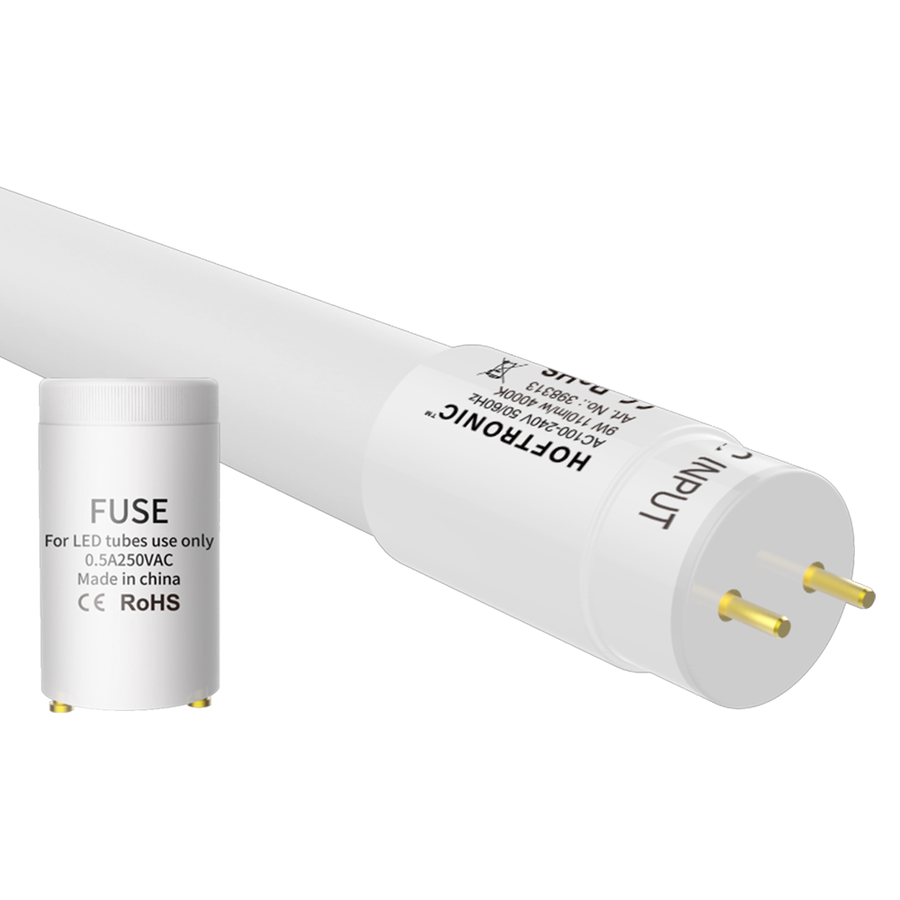
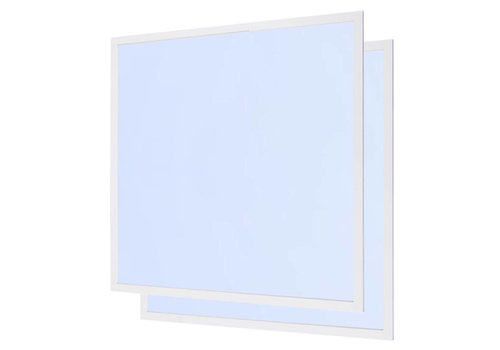
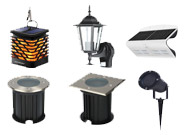
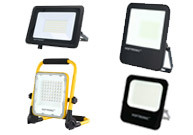

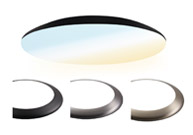
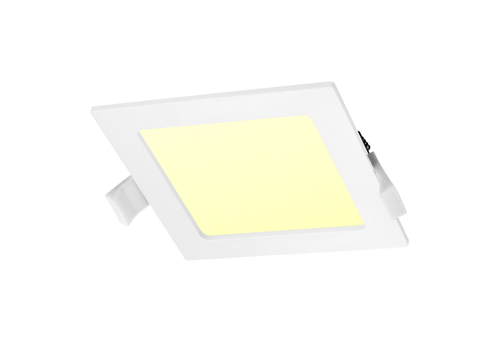


Comments
Be the first to comment...